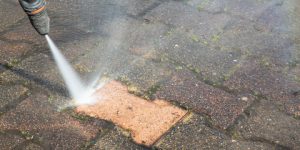Your kitchen is outdated, cramped and cluttered. You want a modern open space for entertaining family and friends.

When you begin looking for a contractor, request recommendations from trusted neighbors and friends who have recently had their kitchens remodeled. Contact Kitchen Renovation Contractor Spring TX for professional help.
A kitchen renovation is an exciting opportunity to transform the heart of your home. However, the project can be complex and time-consuming. Choosing the right contractor is essential to ensure your vision becomes reality. A professional contractor will manage the entire process, allowing you to focus on other tasks and enjoy the transformation of your space. They’ll also make sure the job is done properly, avoiding costly mistakes and delivering a stunning, functional kitchen.
To find the perfect contractor for your project, start by reviewing their qualifications and checking their licenses. Then, ask for bids from your shortlisted contractors and compare them against each other. Make sure the quotes are detailed and cover the same scope of work. You’ll also want to check that your contractor is licensed and insured, which provides a safety net should an accident or injury occur on your property.
During your interviews, pay attention to the contractors’ communication style and how they answer your questions. You want a contractor who is punctual, transparent and clear in their interactions. They should be able to describe the scope of work and provide an estimated timeline. They should also be able to clearly explain any changes or costs that may arise during the course of the project.
You should also look for kitchen remodeling contractors with experience specifically in your type of remodel. Kitchen renovations can be challenging projects that require complex home alterations and sophisticated skills such as detailed finish carpentry or advanced ductwork. Contractors who do great work finishing basements or building family room additions may not be up to the challenge of a full kitchen remodel.
A professional kitchen renovation contractor should have a strong understanding of your desired style and theme for your kitchen. They should be able to translate your vision into a practical plan for the layout, cabinets, appliances, lighting and more. They should also be able to offer suggestions that will enhance your project and increase its resale value.
A professional Kitchen Renovation Contractor is an asset to any home improvement project, making it easier for homeowners to achieve their dream kitchen. They can bring the expertise, efficiency and peace of mind that comes with a professional team to an otherwise daunting and stressful project.
Licensing
Licensed contractors have passed rigorous exams to prove their knowledge and skills, and they’re required to carry insurance that covers you in the event of an accident. Look for these details on their website and social media profiles. You should also ask for proof of their licensing and insurance and verify them with your state’s licensing board and insurer. Membership in professional organizations like the National Kitchen and Bath Association (NKBA), the National Association of Remodelers (NARI) and the NAHB is another good sign of professionalism.
For homeowners, the most important consideration is that your contractor is properly licensed and insured for your renovation project. This protects you from shoddy work that could result in damage to your home or injury to you or the workers. It also ensures that all necessary permits are obtained, and that your renovation is completed safely and to code.
A full-scale renovation involves a wide range of trades, including general contractors, cabinet installers, appliance specialists, electricians and plumbers, as well as an interior designer or kitchen designer to orchestrate the planning and execution of your dream space. Choosing a contractor with experience in all of these specialties is critical to your success.
Many kitchen projects require complex home alterations, detailed finish carpentry and sophisticated ductwork. While your friends and family may be able to recommend a contractor who did a great job finishing their basement or building their deck, these types of projects are very different from a major kitchen remodel.
Once you’ve narrowed down your options, request proposals from your shortlisted contractors. Compare their costs and timelines to find the best fit for your project. When reviewing their proposal, pay special attention to the scope of work, payment schedule and any warranties included. It is also a good idea to have a legal expert review the contract to ensure it’s clear and protects your rights.
Once you’ve secured a permit, demolition begins and your contractor can begin the construction and installation phase. They’ll carefully remove existing fixtures and structures, protecting surfaces they’ll be leaving behind with tarps and plastic sheets. Then it’s time for the fun part — installing new cabinets, countertops, appliances, flooring and more. Your contractor should communicate regularly with you throughout the process to assess progress and address any questions or concerns as they arise.
Insurance
If you decide to hire a contractor, make sure they meet the minimum insurance requirements for contractors in your state or territory. This includes general liability, worker’s compensation and a surety bond. This will provide protection in the event that something goes wrong during your kitchen remodel. Moreover, it will ensure that the contractors are reliable and will do their work well. You can check this information by asking the contractors for proof of their insurance or verifying it with the insurance provider directly.
Also, ask the contractors to provide you with references from previous customers who have undergone a kitchen renovation project. If possible, call those customers and discuss their experiences with the contractors. Find out whether the contractors completed the work on time and within budget, if they were professional in their dealings with customers, and if the final results were satisfactory.
You should also consider how long the kitchen renovation contractor has been in business. A reputable company will have been in business for a long time and will have built up a solid reputation. In contrast, a new company may not be able to offer the same level of stability and reliability. Also, find out if the contractor has had any financial issues in the past, such as bankruptcy, which could affect their ability to complete your job.
It is important to confirm that the kitchen renovation contractor carries general liability insurance, which will protect you if someone is injured on your property while the work is taking place. In addition, the contractor should carry workers’ compensation insurance, which will cover medical expenses and lost wages if one of their employees is injured on the job.
The contractors should also have a surety bond, which will cover any losses you might incur if the contractor fails to finish the job. This is a common problem with home renovators, who often start and never finish the work, leaving the homeowner to bear the cost.
If you live in a co-op, you might need to increase your homeowners’ policy or add renovation coverage during the remodeling process. This is a good opportunity to discuss your plans with an insurance agent and to see what changes might need to be made to your policy.
Communication
A kitchen renovation contractor is a key member of the team, serving as the point person for all subcontractors, pulling the appropriate permits, and ensuring that building codes and inspections are met. They also need to be able to communicate well with the homeowner and other members of the team to ensure that everyone is on the same page throughout the project.
A good kitchen renovation contractor will have a strong track record and extensive knowledge of the remodeling process. They will also be familiar with the latest trends and materials to create a kitchen that is both functional and stylish. They should be able to explain the advantages of different options, provide realistic timelines and costs for the project, and be receptive to your questions and concerns.
When choosing a contractor, be sure to check out their online reviews and ask for references from past clients. This will give you a firsthand look at their workmanship and communication skills. It is also important to verify their licenses and certifications through state licensing boards and professional associations like the National Kitchen and Bath Association. In addition, it is a good idea to get a copy of their insurance coverage in case any unforeseen issues occur during the remodeling process.
It is important to be clear with your contractor about what you want from the kitchen remodel and to set a budget before beginning the project. Creating a budget allows you to prioritize your goals and prevent overspending. Be sure to allow 10-20% of your total renovation budget for unforeseen expenses. Unforeseen expenses can add up quickly and may cause delays in the completion of your kitchen remodel.
Once you have narrowed down your list of potential contractors, request bids and estimates from each one. This will help you compare prices and services offered and choose the best fit for your kitchen remodel. Ask each contractor how they will manage the project, including any timelines and expectations. Having a clear understanding of the kitchen remodel process can help reduce the stress of the renovation and ensure that your vision is realized.








